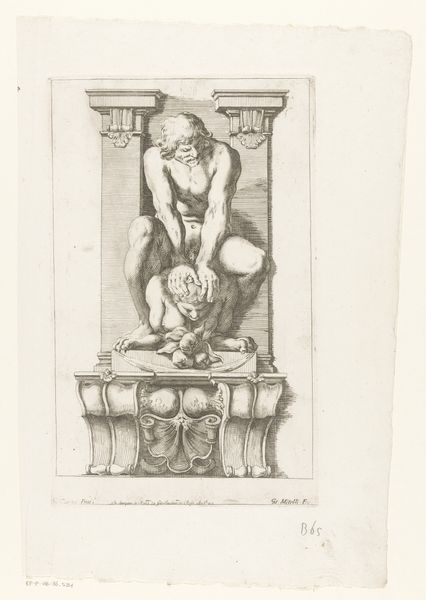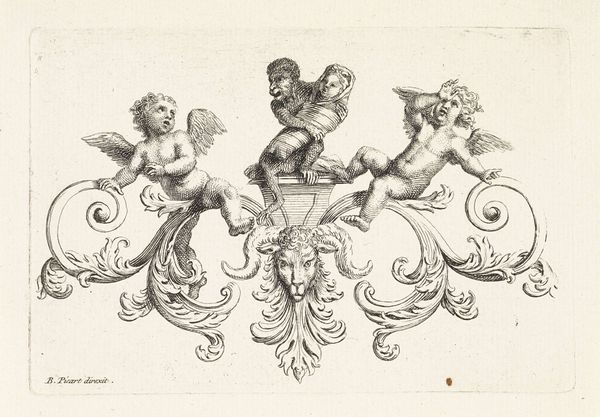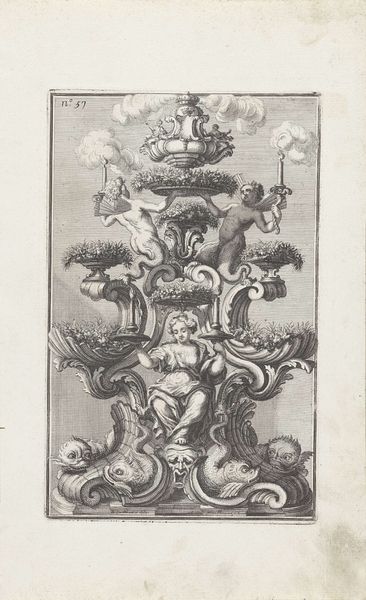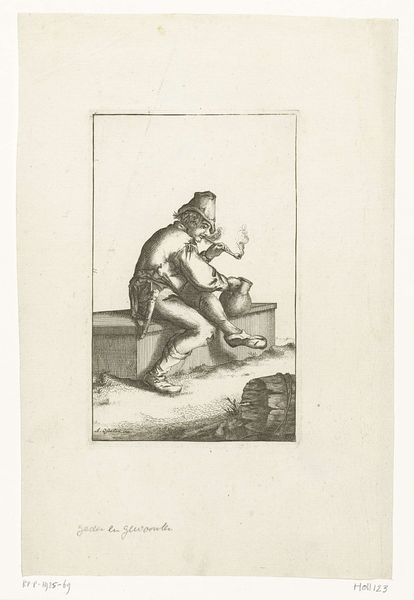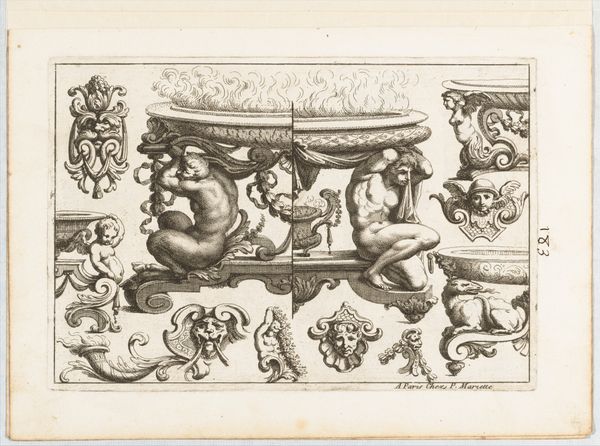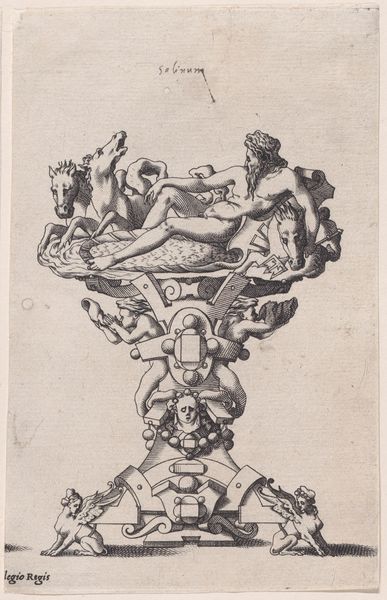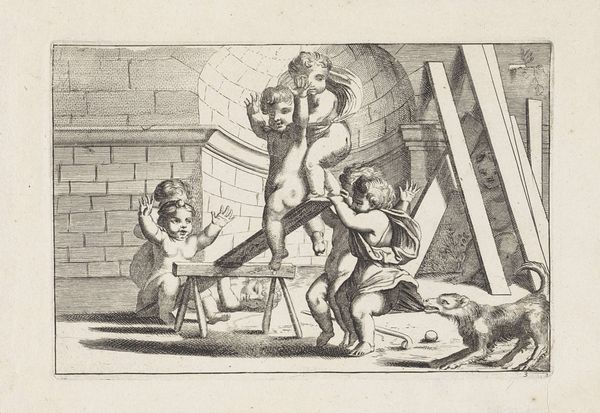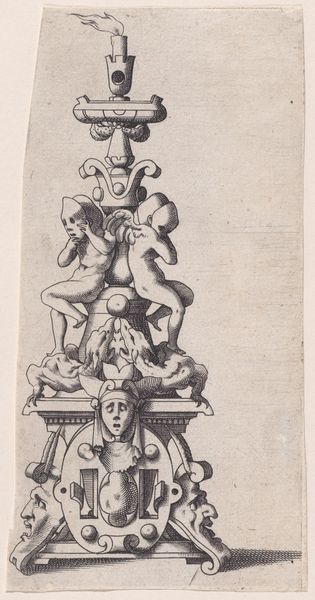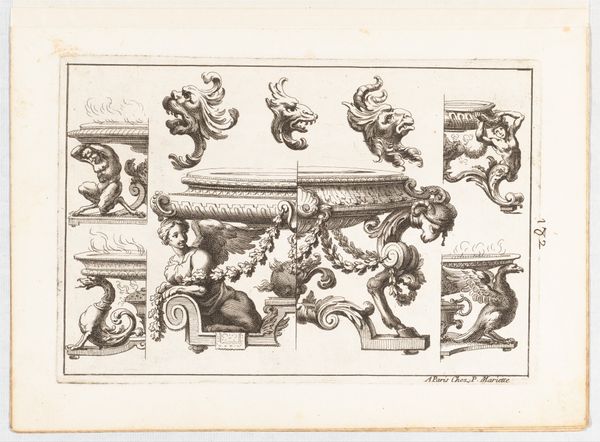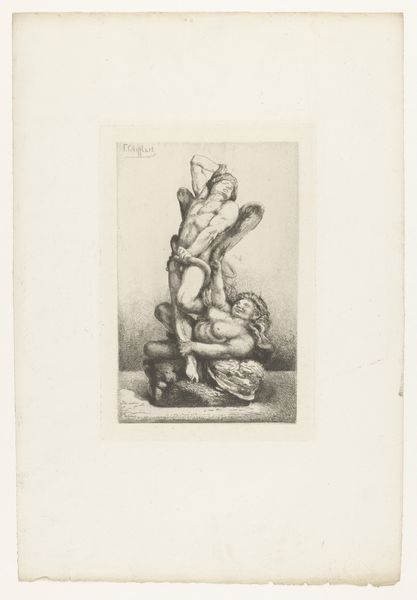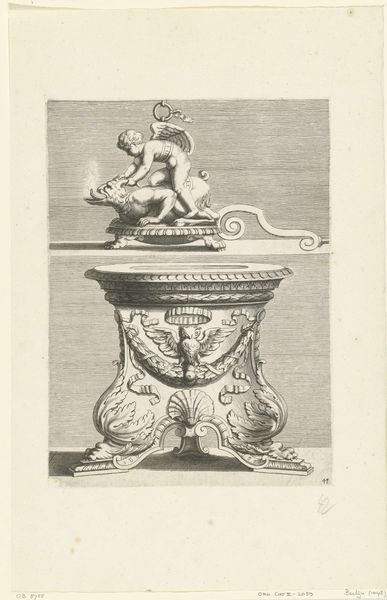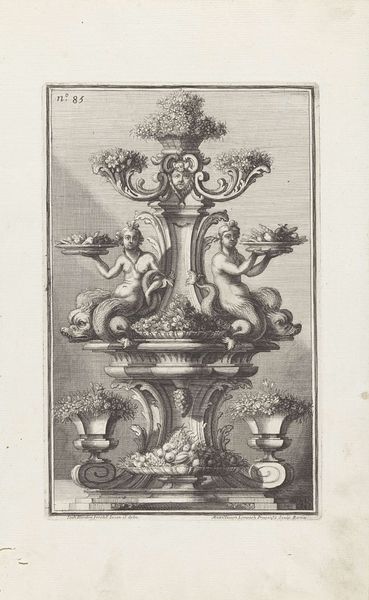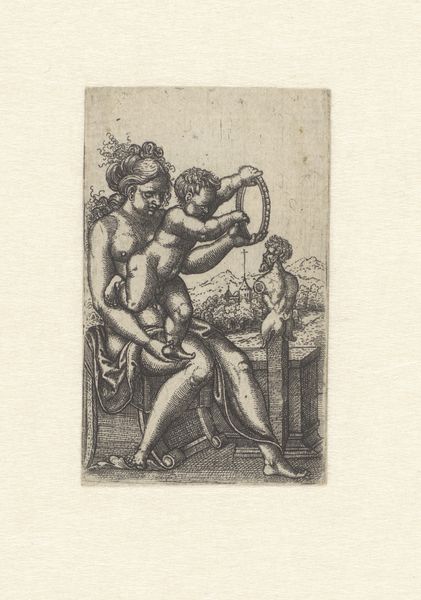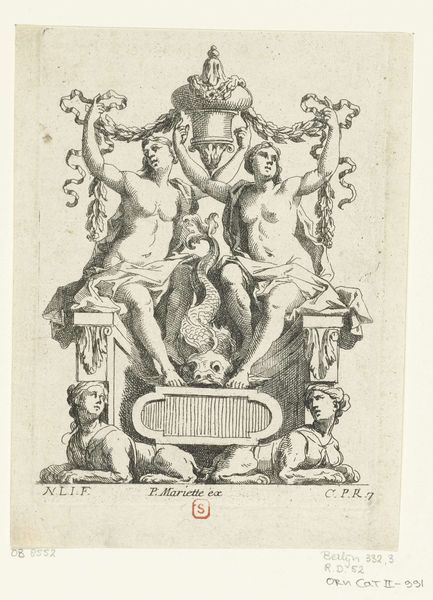
engraving
#
allegory
#
baroque
#
old engraving style
#
figuration
#
engraving
#
erotic-art
Dimensions: height 275 mm, width 205 mm
Copyright: Rijks Museum: Open Domain
Curator: I'm struck by the peculiar scenes in Françoise Bouzonnet's engraving, "Olielamp en kandelaar," made in 1667. Editor: My first thought is how odd, yet sensuous this image appears. The rendering is stark. The figures look trapped between elegance and caricature. What draws you in? Curator: It’s the relationship between the figures, a curious dance between the natural and supernatural. In the upper panel, we see a female figure seemingly adjusting the hair of a devilish creature while another devil below appears to serve as support for a large candle. It suggests themes of taming wildness. Editor: Right. The technical skill required to create such precise lines is impressive. We see careful use of hatching and cross-hatching to define forms. It also seems clear these figures were not crafted out of any direct social imperative—perhaps a commentary on the state and patronage of art. What kind of labor and production values underpinned work like this? Curator: Beyond its construction, it seems very much tied into allegorical traditions. Light—manifest as candle flame, oil lamp—frequently signifies reason, knowledge, or spiritual enlightenment. But the unruly, devilish figures imply those values are often hard won or imperfectly embraced. We see the persistence of the pre-Christian with its horned satyrs still visible under a veneer of reason. Editor: Agreed. I can imagine how such a print would have been consumed—reproduced and traded, maybe as illustrations within larger collections. It's intriguing how artisanal practices intersects with larger religious concepts. What could it have signaled about the era’s view of human potential? Curator: It invites questions about humanity’s complex relationship with knowledge and desire, perhaps hinting that both reside uneasily in a precarious balance, held—literally and figuratively—by these very strange creatures. It evokes the constant, underlying struggle between base impulse and higher aspiration. Editor: Thinking about materiality, such accessible art fostered wider distribution of imagery that bolstered social imaginaries, but its fine detail speaks of luxury consumption too. A really fascinating tension. Curator: Indeed. This is more than just aesthetics; it is a record of social anxiety as a given society makes images to shape its values. Editor: A great lens for grasping the role of art as cultural and economic artifact. Thanks!
Comments
No comments
Be the first to comment and join the conversation on the ultimate creative platform.
